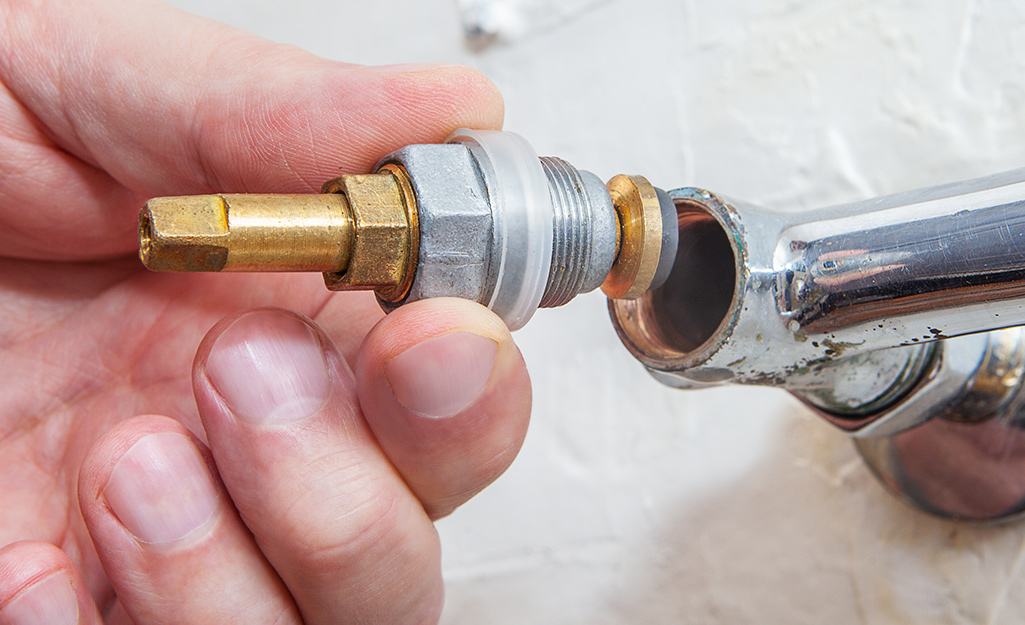The article in the next paragraphs on the subject of Water Dripping from Faucet: Why and How to Fix is truly interesting. You should look it over.

Leaking taps might look like a minor inconvenience, yet their influence exceeds just the inconvenience of the noise. From drainage to incurring unnecessary financial expenses and health dangers, neglecting a trickling faucet can result in different repercussions. In this post, we'll delve into why it's vital to address this typical house problem quickly and effectively.
Waste of Water
Ecological Impact
Dripping faucets add considerably to water wastage. According to the Epa (EPA), a single faucet trickling at one drip per second can waste greater than 3,000 gallons of water per year. This not just pressures water sources but likewise influences environments and wildlife depending on them.
Financial Prices
Enhanced Water Expenses
Past the ecological influence, leaking faucets can blow up water bills significantly. The accumulated wastage gradually translates into higher energy expenses, which might have been stayed clear of with prompt repairs.
Prospective Home Damages
In addition, long term dripping can result in harm to fixtures and surfaces bordering the faucet. Water accumulation can trigger staining, corrosion, and even architectural problems if left neglected, resulting in added repair service prices.
Health and wellness Concerns
Mold And Mildew and Mold Growth
The constant visibility of wetness from a trickling tap produces an excellent setting for mold and mold growth. These fungi not only endanger interior air quality however additionally pose health and wellness threats, particularly for people with respiratory problems or allergic reactions.
Waterborne Conditions
Stagnant water in trickling taps can come to be a breeding ground for germs and other pathogens, raising the risk of waterborne conditions. Impurities such as Legionella microorganisms grow in stagnant water, potentially causing serious health problems when consumed or breathed in.
Do it yourself vs. Professional Repair service
Benefits and drawbacks of Do It Yourself Repair
While some might try to fix a leaking tap themselves, do it yourself repair services feature their very own collection of challenges. Without proper expertise and tools, DIY efforts can intensify the problem or lead to insufficient repairs, prolonging the issue.
Advantages of Hiring a Specialist Plumber
Hiring an expert plumber ensures that the underlying reason for the trickling faucet is dealt with efficiently. Plumbing technicians have the experience and tools to identify and fix tap issues effectively, conserving time and reducing the risk of more damages.
Step-by-Step Guide to Dealing With a Dripping Faucet
Devices Required
Prior to attempting to take care of a dripping faucet, gather the required tools, including a flexible wrench, screwdrivers, substitute components (such as washers or cartridges), and plumber's tape.
Typical Faucet Issues and Their Solutions
Recognize the type of tap and the particular concern creating the drip. Typical problems include damaged washers, corroded shutoff seats, or damaged O-rings. Refer to supplier instructions or on the internet tutorials for detailed guidance on repairs.
Preventive Measures
Normal Maintenance Tips
To stop trickling taps, execute routine upkeep such as cleansing aerators, checking for leaks, and changing damaged components quickly. Furthermore, consider mounting water-saving devices or updating to a lot more efficient fixtures.
Significance of Prompt Repairs
Addressing leaking taps as soon as they're observed stops further water wastefulness and potential damage, inevitably conserving both water and money over time.
Influence On Building Value
Perception of Well-Maintained Building
Maintaining a property in good condition, including dealing with upkeep issues like leaking faucets, improves its viewed worth and desirability among prospective customers or lessees.
Influence on Resale Worth
Characteristics with well-kept plumbing components, consisting of faucets, command higher resale worths in the real estate market. Attending to trickling taps can add to a positive perception during building examinations and negotiations.
Environmental Responsibility
Private Contribution to Preservation
Taking responsibility for repairing leaking faucets lines up with more comprehensive efforts toward water conservation and ecological sustainability. Every individual's activities jointly make a substantial effect on preserving valuable sources.
Lasting Living Practices
By focusing on punctual repair work and taking on water-saving routines, people add to sustainable living techniques that benefit both existing and future generations.
Conclusion
Addressing a leaking tap goes beyond simple convenience; it's a crucial step toward preserving water, reducing economic costs, and protecting wellness and home. Whether via do it yourself repairs or professional support, acting to take care of leaking taps is a little yet impactful method to advertise liable stewardship of sources and add to a much healthier, a lot more sustainable future.
How to Fix a Dripping or Leaky Faucet
A leaking faucet is one of the most common problems that homeowners encounter, but it being commonplace doesn’t make it any less annoying. The constant drip drip drip of a leaking bathtub faucet, showerhead, or sink tap can disturb your home’s serenity. Left neglected, a dripping faucet can also result in higher water bills and discoloration or mold growth in your sink or plumbing fixtures.
Fortunately, you don’t have to be a trained plumber to know how to stop a dripping faucet. With some basic tools, replacement parts, and a little patience, leaky faucet repair is a breeze. In this article, we’ll explain what causes dripping faucets and how you can fix them.
What Causes a Leaking Faucet?
Kitchen and bathroom faucets come in all manner of designs, but most involve some combination of valves, O-rings, seals, and washers. The O-ring is usually the weakest link, but any one of these pieces can wear down over time. Heat, moisture, temperature fluctuations, minerals, mold, and movement can contribute to warping and corrosion, breaking the watertight seal. This just comes with the territory of being a homeowner. Everything is always subject to wear and tear, and some component parts of your appliances and fixtures need to be replaced on occasion. At least replacement O-rings are cheap!
More rarely, dripping faucets can be a symptom of excessively high water pressure. Were this the case in your home, you would probably notice that the leak is not isolated to one faucet. Water pressure issues are harder to resolve on your own. We recommend contacting a professional plumber if you suspect your water pressure is too high.
How to Fix a Dripping Faucet
Pipe wrench or monkey wrench Allen wrench set Screwdrivers Old towel or rag Shut off the water.
Before you do anything, you need to turn off the water to keep from drenching your kitchen or bathroom. You should find a valve under the sink and against the wall. Once you’ve turned this valve, try turning the faucet on to confirm that the water source has been cut off.
If you can’t locate your local valve for the faucet you’re working on, you can always shut off the water to the house at the main valve. Of course, this will prohibit anyone from using the sinks, showers, or toilets while you’re working on the faucet that’s giving you trouble.
Plug or block the drain.
You’ll be disassembling the faucet and removing some small bits of hardware. Plug the drain with a stopper or rag to avoid the possibility of a small screw falling into your P-trap.
Take apart the faucet assembly.
There are several varieties of kitchen and bathroom faucets, each with its own manner of assembly. For detailed instructions on how to disassemble your faucet, you can refer to the fixture’s manual or contact the manufacturer. If you know whether you have a ball, disc, cartridge, or compression faucet, you can find detailed schematics online.
In general, you need to begin by removing the faucet handles. You might notice a small screw that you’ll need to remove with a screwdriver or Allen wrench. If you don’t see any visible securing hardware, it’s likely hidden under a decorative cap that can be unscrewed or popped off with flathead screwdriver.
Remove each piece methodically, consulting a schematic when necessary. Take notes or arrange the pieces in such a way to make it easier to correctly reassemble the faucet later.
Remove the cartridge.
Once you’ve removed the handles and securing hardware, you should be able to remove the valve cartridge or stem. Some cartridges will slide right out. Other faucet models will require you to loosen a nut with a pipe wrench before you can remove the valve stem.
Examine the exposed hardware.
With the cartridge or stem removed, inspect the component parts. Check the rubber O-rings for wear and tear. Also examine the seat washer for corrosion or other damage. These pieces are usually the responsible parties for a dripping faucet, but it’s worth inspecting the other component parts while you have the faucet disassembled.
Find replacement parts.
Once you’ve identified which faucet component has failed, find an identical replacement. Your local hardware store should have O-rings, seat washers, and other standard components in stock. If you have a luxury or uncommon faucet, you may have to contact the manufacturer for a replacement part.
It’s a good idea to take your old parts with you to the hardware store so you can compare them with the store’s inventory and be sure you’re purchasing the correct replacement.
Reassemble the faucet.
With your new parts in hand, reconstruct the faucet and handles. Don’t be tempted to overtighten screws or nuts. You might think this could create a better seal, but it can instead damage or bend a delicate part of the assembly and create a new problem for you.
Turn on the water and test the faucet.
The only thing left to do is test your work. Unplug the sink, turn the water back on, and try the faucet. Congratulate yourself on a job well done!
https://www.libertyhomeguard.com/how-to-fix-a-dripping-or-leaky-faucet/

As a serious person who reads about What Causes Leaky Faucets & How To Fix Them, I imagined sharing that information was smart. Sharing is nice. You just don't know, you may just be doing someone a favor. I love your readership.
 Judge Reinhold Then & Now!
Judge Reinhold Then & Now! Jenna Jameson Then & Now!
Jenna Jameson Then & Now! Sydney Simpson Then & Now!
Sydney Simpson Then & Now! Barbi Benton Then & Now!
Barbi Benton Then & Now! Nicholle Tom Then & Now!
Nicholle Tom Then & Now!